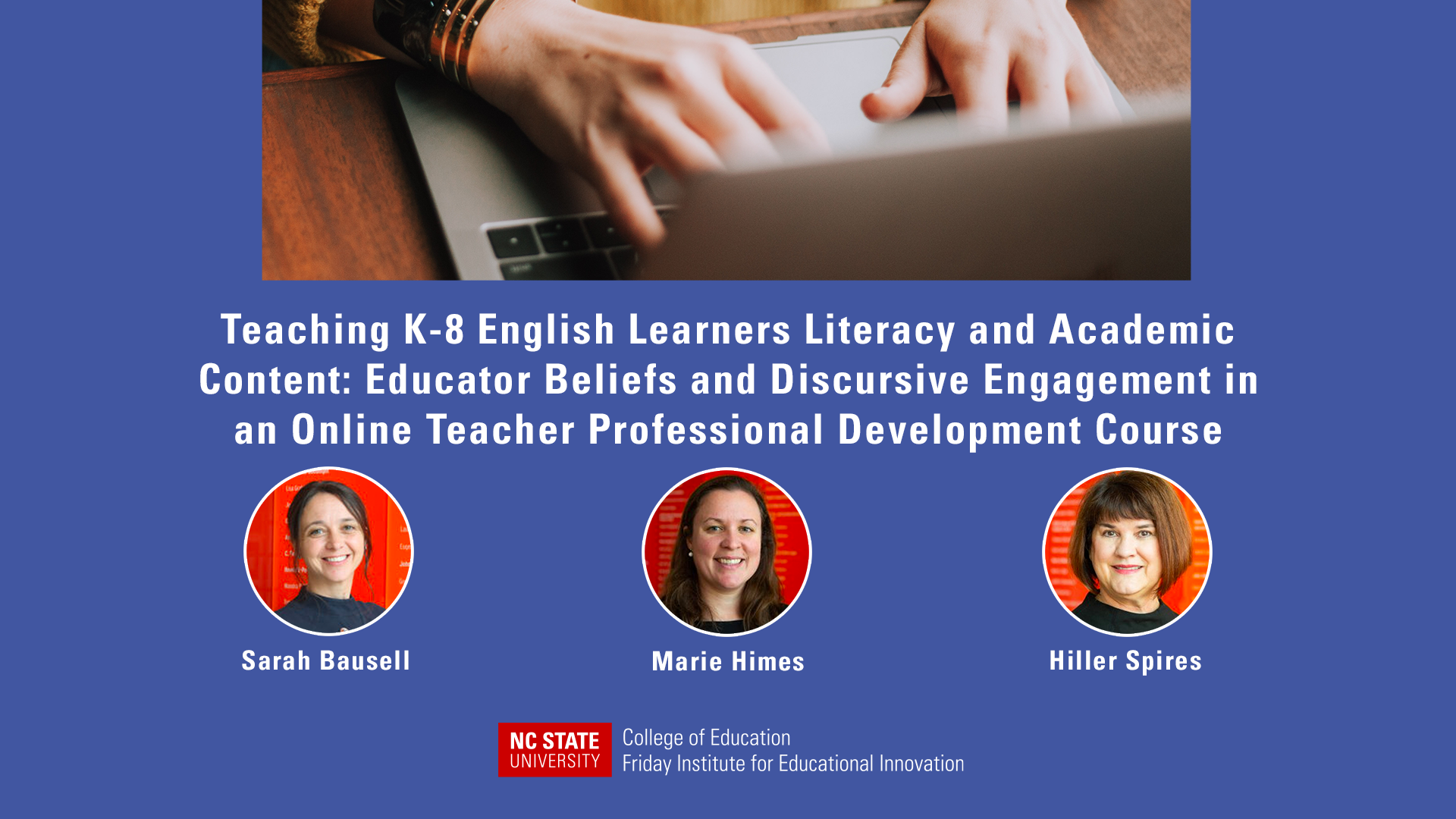New Research Highlights Best Instructional Practices for Online Teacher Professional Development When Working with Multilingual Learners

A recent research study published by the Friday Institute for Educational Innovation’s New Literacies Collaborative, comprised of Research Scholar Sarah Bausell, New Literacies Collaborative Director Marie Himes and Executive Director and Professor Emerita Hiller Spires, underscores the importance of online teacher professional development (oTPD) instructional design that explicitly encourages participants to discuss and connect learning to their practice.
“Teaching K-8 English Learners Literacy and Academic Content: Educator Beliefs and Discursive Engagement in an Online Teacher Professional Development Course,” which was published in The American Journal of Distance Education, examined 85 educators’ beliefs before and after taking the oTPD “Teaching K-8 Multilingual Learners Literacy and Academic Content.” Researchers found that participants were more likely to generate dialogue and learn more when they connected learning to their professional practice. Therefore, the study stresses the importance of oTPD instructional design that explicitly encourages participants to talk about their professional experiences in course discussions.
“These findings emphasize just how important participant dialogue is within online professional learning courses” said Bausell. “When educators shared tangible details and asked one another questions about their professional context and experiences, they were able to engage more fully with course content and, consequently, reported changes in their beliefs about multilingual learners.”
Launched in the fall of 2020 by researchers at the Friday Institute, “Teaching K-8 Multilingual Learners Literacy and Academic Content” was created to help participants more effectively prepare their emergent multilingual students in elementary and middle grades with the skills they needed to be successful in school. The online course focused on the foundational skills that enable multilingual learners to understand academic vocabulary, integrate oral and written English language into content areas, develop written language skills and participate in small-group interventions for literacy and language development.
According to the study, this is a critical challenge for K-8 teachers as the number of multilingual learners continues to increase in the United States. The Institute of Education Sciences found that the percentage of public school students designated as “English learners” (ELs) in the United States rose from 8.1% (3.8 million) in 2000 to 9.6% (4.9 million) in 2016 and a higher percentage of ELs are concentrated in the lower grades of U.S. public schools. According to the study, in the past, specialized instruction for multilingual learners was the primary responsibility of English as Second Language (ESL) teachers. Today, however, the development of English for academic purposes is the responsibility of all educators, including administrators and counselors.
“Teachers across grade levels and content areas are instructing students who bring a wealth of diverse linguistic and cultural knowledge to the classroom,” said Himes. “Understanding how to affirm, connect and leverage this knowledge in service of multilingual learners’ continued development in literacy and academic content areas is essential for high quality and equitable teaching and learning.”
The purpose of this study was to understand educator learning about best instructional practices for multilingual learners in the context of a free oTPD course. Researchers used a mixed methods approach to study both qualitative and quantitative findings.
They found that the course “positively impacted participants’ beliefs no matter their professional characteristics” and that there were two themes of discourse: unsituated pedagogical discourse, in which participants wrote about course content in isolation, and situated pedagogical discourse, wherein participants contextualized and extended course content within their unique professional contexts. The study’s findings extend oTPD research by “identifying the type of discourse more likely to generate dialogue and, therefore, co-construction of knowledge.” Researchers found that there was more dialogue between participants following a post with situated discourse. The article concludes with design recommendations to increase participant use of situated pedagogical discourse.
- Categories:


